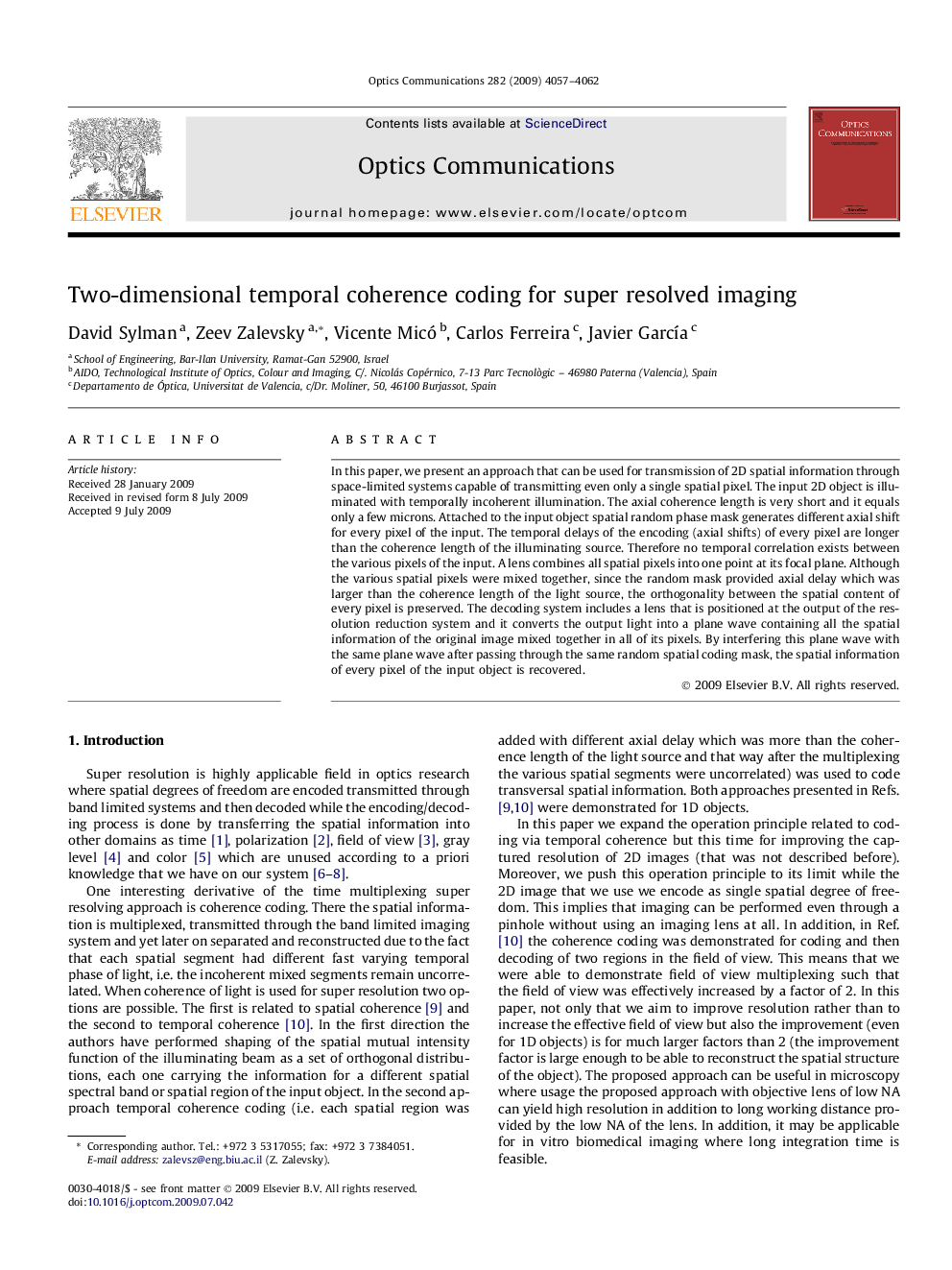| Article ID | Journal | Published Year | Pages | File Type |
|---|---|---|---|---|
| 1539941 | Optics Communications | 2009 | 6 Pages |
Abstract
In this paper, we present an approach that can be used for transmission of 2D spatial information through space-limited systems capable of transmitting even only a single spatial pixel. The input 2D object is illuminated with temporally incoherent illumination. The axial coherence length is very short and it equals only a few microns. Attached to the input object spatial random phase mask generates different axial shift for every pixel of the input. The temporal delays of the encoding (axial shifts) of every pixel are longer than the coherence length of the illuminating source. Therefore no temporal correlation exists between the various pixels of the input. A lens combines all spatial pixels into one point at its focal plane. Although the various spatial pixels were mixed together, since the random mask provided axial delay which was larger than the coherence length of the light source, the orthogonality between the spatial content of every pixel is preserved. The decoding system includes a lens that is positioned at the output of the resolution reduction system and it converts the output light into a plane wave containing all the spatial information of the original image mixed together in all of its pixels. By interfering this plane wave with the same plane wave after passing through the same random spatial coding mask, the spatial information of every pixel of the input object is recovered.
Related Topics
Physical Sciences and Engineering
Materials Science
Electronic, Optical and Magnetic Materials
Authors
David Sylman, Zeev Zalevsky, Vicente Micó, Carlos Ferreira, Javier GarcÃa,
